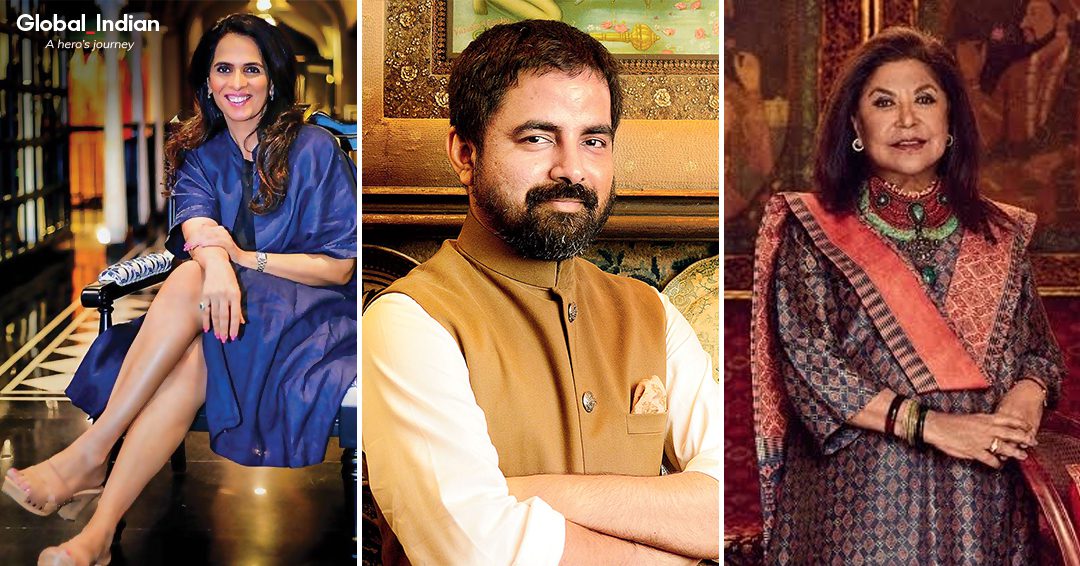(August 21, 2021) Vaishali Shadangule can best be described as a creative powerhouse. From working with weavers at the looms directly on the fabric composition, exploring and enhancing the quality of the textile to bringing design changes and experimenting with hand-woven textiles – as an Indian designer, she gives a personalized touch to each of her creations which makes her standout from the rest.
For fashion designer Shadangule, it is the honesty and authenticity of her designs which do the talking. Her creativity took her places but it was her debut at the Paris Haute Couture Week 2021 which marked one of the most exciting moments and took her to newer heights. After all, she is the first Indian woman designer to be invited to showcase her creations at the most prestigious event in the world of fashion.
“When it comes to my work, I never compromise,” declares Shadangule. In conversation with the Global Indian, the designer describes her no-compromise attitude as a tough decision that made her journey tougher. “But eventually, it kept me going and made me what I am today,” she says of her incredible journey. Vaishali S, an eponymous brand, was borne out of the designer’s affection and passion for the classic Indian weaves.

Vaishali Shadangule showcasing her collection at a fashion show
Born in the small town of Vidisha in Madhya Pradesh, Vaishali left home when she was 17. After taking up small jobs to complete her graduation, she headed to Gujarat for a job and finally reached Mumbai in the year 1999 where she worked as a fitness instructor. Thereafter, she enrolled in the Pearl Academy in New Delhi, one of the leading fashion and design colleges in the country, and completed the two-year degree course before opening her first boutique. “It was a huge struggle,” she recalls.
“I don’t think I am very different from when I started, for good and for bad. As a person, I am still extremely focused on the same values and behaviors that I grew up with. All my journeys across the globe broadened my horizons,” informs Shadangule, who is only the second Indian designer after Rahul Mishra to showcase her creations in Paris.
Her collection ‘Shwas’ (which means breath) was inspired by nature and desi weaves, tree branches and barks. “Nature has been a source of inspiration ever since I started off,” she says. For Shwas, she sourced weaves from different parts of the country including Karnataka and West Bengal. Luckily for her, the fashion week returned to the physical show after a year of virtual representation owing to the Covid-19 pandemic. Vaishali showcased her collection on the last day alongside some big names in the fashion world including Chanel and Dior among others.
“My journeys across villages in India made me appreciate all the intricacies and depth of our different weaves,” says Shadangule, who has been experimenting with hand-woven textiles and designs for almost two decades now. It was in the year 2011 that Vaishali S label was unveiled at Lakme Fashion Week, which was resplendent with handloom prints. She has been showcasing at New York Fashion Week since 2015. While she also runs a flagship store in Mumbai, her designs can be found in London and Milan boutiques.
For Shadangule, the USP behind her success has been to stay focused. “In any line of work, one needs to go deeper and deeper into the technical skills involved. Passion, commitment, and sound technical skills are the key to success.” Interestingly, Shadangule, who extends her work with textiles to art and design, draws inspiration from her ability to observe and listen, which shows in her designs.
She says her love for the culture and treasures (different weaves, fabrics) of the country is what makes her a complete desi. “My creations are my freedom of expression,” smiles Vaishali, who is a doting mother of a teenage daughter. Like many successful people, Shadangule too has faced many hurdles. “But I feel blessed to have met several people who helped me each time I faced a hurdle. I believe everything comes as a package and nothing is permanent.” Being myself, she says, is what helped her ride the ride. “The strength comes from the fact that I always did it my way and by myself.”

Vaishali Shadangule at her store in Mumbai
Ask her to name one Indian-ness that has remained with her throughout, the 43-year-old laughs as she replies, “My piping hot cup of chai (tea)” which she says keeps her going. With Vaishali S being a brand worldwide, the designer feels that brand India comes associated with culture and workmanship. “I think we just need to be able to up the game and make a more in-depth presentation of our skills overseas.”




